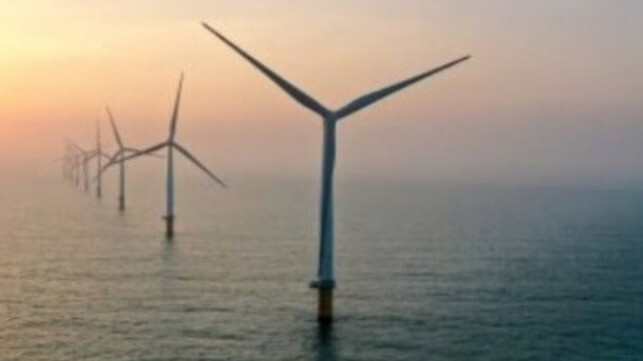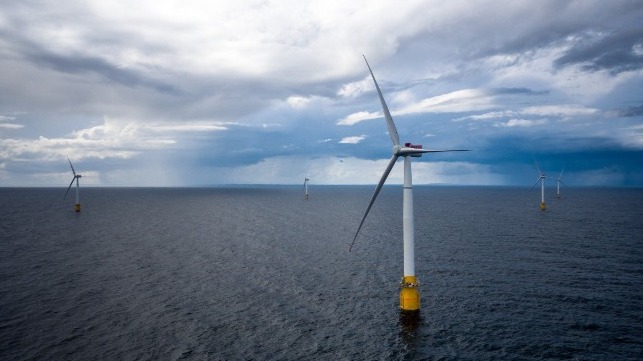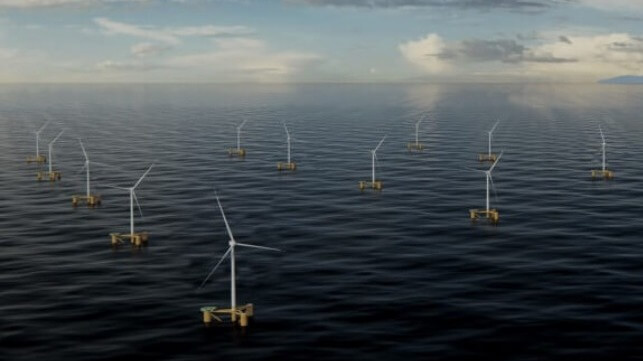New York Opens Fourth Offshore Wind Solicitation Reflecting Industry Issues

New York State as scheduled officially opened its fourth solicitation today for offshore wind projects as well as land-based renewables. It is part of the state’s efforts to accelerate its efforts in renewable energy while also seeking to reflect changes in the industry and make up for recent setbacks.
New York Governor Kathy Hochul launched a 10-Point Action Plan last month that she said included plans to overcome macroeconomic and inflationary challenges that have impacted the renewable energy sector. New York’s progress toward its goal of producing 70 percent of its energy from renewables by 2030, with 9 GW of offshore wind energy by 20235, was endangered by recent decisions. Planned projects by Ørsted, BP and Equinor petitioned state regulators to permit them to reset pricing on the power purchase agreements reflecting the financial pressures on the industry. The regulators rejected the proposals prompting the developers to threaten to walk away from their projects which represent up to 5 GW of wind energy.
The New York State Energy Research and Development Authority (NYSERDA) released the new solicitation saying it was designed to expedite the process and build on momentum for the industry. They highlighted that conditional awards include three offshore wind and 22 land-based renewable energy projects totaling 6.4 gigawatts of clean energy, enough to power 2.6 million New York homes and deliver approximately 12 percent of New York’s electricity needs once completed. New York’s first large offshore wind farm, Ørsted’s South Fork (132 MW) is expected to generate its first power in the coming days and be completed around the beginning of 2024.
The new call is open to all bidders and provides greater flexibility according to NYSERDA. It sets a minimum size of 800 MW for the proposals. The maximum size that will be considered is 1.4 GW of capacity that is not already under contract.
Critically the solicitation includes provisions for a variety of proposals, including the opportunity for projects that currently hold power contracts to participate, allowing the companies to re-bid their projects as a means of resetting the pricing. NYSERDA notes that the companies must commit to conditional termination and that the process includes an updated policy to permit the terminations. The developers that recently lost their request to NYSERDA were waiting for the release of the new process before determining their actions.
NYSERDA is also reporting that steps were taken to streamline the process compared to the previous solicitation. Beyond the increased flexibility they are also reducing the bid fees due with the proposals. As with the previous round, they are also offering the option of incorporating a price structure into the proposal that permits a one-time adjustment to reflect changes in certain price indices. NYSERDA says this will help to ensure the long-term viability of the projects.
Other provisions include a minimum U.S. iron and steel purchase requirement for all projects awarded to encourage domestic steel production. They write that this will also provide opportunities for U.S.-based steel suppliers to participate in the growing offshore wind industry. The new solicitation also adds a provision requiring proposals to understand the benefits and burdens to disadvantaged communities as well as the standing requirements for environmental mitigation, fisheries mitigation, engagement, and New York workforce plans.
Reflecting the efforts to accelerate New York’s renewable energy efforts, final proposals for the offshore wind solicitation are due by January 25, 2024, with award announcements expected to be made by the end of February 2024. The separate land-based component seeks proposals by the end of January 2024 and expects to announce results by April. The goal for the wind projects is to execute contracts by the second quarter of 2024.
Equinor Emphasizes "Perseverance" on West Coast Offshore Wind

Despite the serious financial headwinds facing the U.S. offshore wind industry, oil major Equinor has reiterated its commitment to a future two-gigawatt megaproject off the coast of California, which will use a floating platform technology that is more expensive than the bottom-fixed foundations found on the U.S. East Coast.
Equinor holds a prime lease area about 50 nautical miles off Morro Bay, California, one of the premier areas for wind development in the state. There are several recent developments in its favor: California's government has approved a central buyer agency for wind power, and it has smoothed the path for local permitting and power transmission, improving the odds of commercial viability. Still, given elevated local construction costs, California's transmission grid limits, and the economic difficulties facing even less-costly developments on the other side of the nation, clean power advocates acknowledge that West Coast offshore wind faces a challenging path and a longer timeline to market.
Equinor announced Wednesday that it has named its future Morro Bay wind project Atlas, in hopes of projecting an image of resilience.
"Atlas is a symbol of strength and fortitude, and most importantly perseverance, as we bring tested, world-class technology to California’s Central Coast,” says Molly Morris, President Equinor Renewables Americas. “Courageousness is one of our company’s core values and Atlas is a perfect representation of forward momentum."
Equinor's existing Empire and Beacon Wind projects on the U.S. East Coast face substantial headwinds due to inflation and interest rate hikes, and they are believed to be under review for commercial viability. Project partner BP - which paid Equinor $1.1 billion in 2020 to take a 50 percent stake in these projects - recently declared that the U.S. offshore wind business model is "fundamentally broken" after recording a $540 million impairment on the two developments. Equinor booked a smaller writedown of $300 million on Empire and Beacon early this month.
Empire Wind 1 originally bid for a New York State power purchase auction at a strike price of $118 per MWh, and BP/Equinor unsuccessfully sought permission to raise that rate to $160. For Beacon Wind, they sought to increase the price from $118 per MWh to more than $190, a jump of more than 60 percent. Since the state has denied permission to raise prices for either one, analysts see a possibility that the projects may be canceled and rebid. In anticipation of this scenario, New York's governor has announced a future auction round early next year to replace projects that withdraw from their contracts.
IKEA Store Operator Invests in Offshore Wind and Hydrogen to Restore Baltic

The largest operator of IKEA stores, Ingka Group which accounts for about 90 percent of IKEA’s worldwide retail sales, is increasing its investments in offshore wind as part of a company-wide Energy Transformation commitment. Ingka announced its third offshore investment with OX2, a Swedish renewable energy company.
Ingka will acquire for an initial payment of approximately $22 million a 49 percent stake in two next-generation Swedish offshore wind projects currently under development. The transaction includes the offshore projects Pleione located east of Gotland and Neptunus located southeast of Blekinge, which amounted to 2.4 GW in OX2’s development portfolio in Q3 2023. Following successful permitting for the projects, OX2 will in addition receive a pre-agreed deferred consideration of approximately $68,0000 per MW for 49 percent of the planned capacity. Following the completion of the transaction, the development costs for the projects will be shared according to the respective party’s ownership.
In addition to the offshore wind farms, the companies highlight that they will investigate the establishment of offshore hydrogen production facilities. They are exploring these facilities and how this can enable artificial oxygenation of the Baltic and thereby bring back marine life to parts of the Baltic that suffer from anoxic conditions.
OX2 and Ingka Investments are also currently exploring future opportunities in the Swedish market including the project Ran located near Pleione. Today’s transaction is the third investment by Ingka with OX2. In June they acquired a 49 percent stake in three offshore projects in Finland and in 2022 invested in three offshore projects in Sweden. Separately in October, Ingka Investments purchased a 20 percent stake in a 10GW offshore wind energy to electric and hydrogen production portfolio from UK-headquartered Source Galileo.
The investments are part of the company’s energy strategy for its operations and overall contribution to decarbonization. It follows a similar strategy to other large corporations such as Amazon which are also investing in renewable energy to power their operations.
“Today we produce more renewable energy than we consume across our operations and we are going one step further with our renewable energy commitment,” said Juvencio Maeztu, Deputy CEO and CFO of Ingka Group (IKEA).
Briefing investors he highlighted the offshore wind investment is part of an additional €1 billion investment commitment made today in the company’s energy transformation. It is in addition to previous commitments to invest €6.5 billion in renewable energy. In addition to the recent investments in wind farms and offshore wind development, the company is investing in solar parks with its renewable energy investments spanning Australia, Finland, and Italy.
Ingka is the largest franchise operator of IKEA with retail operations in 31 markets and encompassing 482 stores. For the stores, shopping centers, warehouses, distribution centers, officers, and other buildings they are investing in retrofits with renewable heating and cooling systems. The company also recently launched its first-ever battery storage project at a location in Texas.